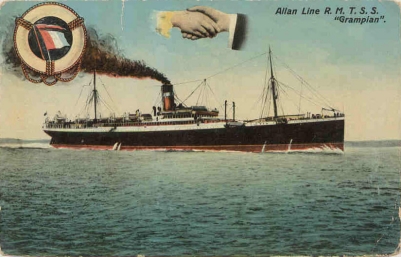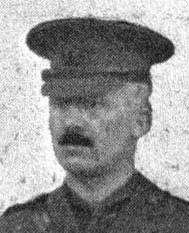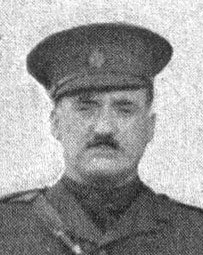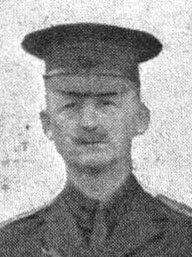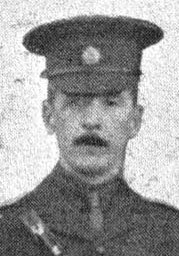30 April 1915 - West Sandling Camp, Shorncliffe
The old saying about the world being such a small place, still holds good. When I arrived at this out of the way place, I fully expected to be quite alone outside of the few I knew of our own crowd. But not so. As soon as we arrived I immediately began to see my old friends ... In fact I knew all the officers with exception of three or four which I know now. And it is the same all over the camp.The 2nd Divisional Train now consisted of 26 officers and 459 men, organized into four Companies, Numbers 5 to 8, and the Headquarters. There were also three additional personnel attached from the Canadian Army Medical Corps (C.A.M.C.). Leslie Payne, George Willox, Bob Moodie and William Hogg would remain in this vicinity for most of the summer of 1915.
The following is from notes made by my father C.B. Payne (CBP):
The 1" O.S. map of 1945 (Sheet 173) shows what I think is likely to be [Dibgate] camp, though it isn't named, about 1½ miles N.E. of Hythe Town centre. In September 1950 my parents & Bunnie spent a holiday at Folkestone and I joined them for a [weekend]. (By bus from Canterbury where I worked 28th August 1949 to 15th Nov 1950.) On 10th September Dad & I walked to Sandgate, on the road to Hythe, and I vaguely recall his mentioning having been at a camp nearby. Or do I imagine it?Shorncliffe appears to have been a military base at least as far back as 1802, when General Sir John Moore ("the father of the Light Infantry") began to develop further his ideas for the training of infantry at that location. Germans troops were even trained there during the preparations for the Crimean Campaign. Otterpool was another training camp to the west of Shorncliffe, near Lympne. Shorncliffe and Dibgate became major training and embarkation camps for Canadian (C.E.F) soldiers during the First World War, and the base for the entire Canadian Second Division. By February 1915, there were 40,000 Canadian troops training in Shorncliffe, Hythe and Dibgate. Shorncliffe is still an army barracks, and was recently home to a Ghurka Regiment.
According to the War Diary, Saturday was "spent in cleaning of lines &c." presumably preparing their camp for long term occupation, for training, and for the arrival of the horses, which they would take charge of and train with over the next few weeks. On Sunday, however, there was no parade, and no onerous duties to perform; the men would perhaps have had a chance to relax and explore a bit further afield.
Harold W. McGill had the following to say about the situation of the camp at Shorncliffe, in a letter home:
Our camp is on a hill over looking the sea about four miles from Folkestone. The ships are passing up and down all day and on clear days we can make out the French coast quite distinctly. With field glasses we can see the towns and villages. We are about 50 minutes by flying machine from the scene of the fighting.This illustrated that even though it would be another four and a half months before they got to France, they could never feel too detached from the war. Louis Duff of the 28th Battalion expressed similar sentiments in his own letters:
Our camp is seven miles west of Dover on a height overlooking the sea. We have two very pretty coast towns close by, Hythe west of us about an hours walk and Folkestone, a popular sea side resort, east of us a couple of miles. On a clear day the coast of France shows up very plainly. Submarines and Torpedo Boat Destroyers are patrolling the sea all the time. Aeroplanes and dirigible balloons are a common sight.Source
The Wilbert H. Gilroy Collection, Correspondence & Photographs, publ. by the Canadian Letters & Images Project
War Diary of the 2nd Divisional Train, C.A.S.C., Apr 1915 - Jun 1916, Library & Archives of Canada microfilms Ref #T-10903 & #T-10904, transcribed by Brett Payne
 Riding into War : The Memoir of a Horse Transport Driver, 1916-1919
Riding into War : The Memoir of a Horse Transport Driver, 1916-1919